Even a few weeks prior to the start of the 2015 season, many people had written off Marussia’s chances of ever making it to the Formula One grid again. The team’s management had other ideas, announcing new investment in early March, and an all-new driver line-up just days before round one in Australia. We caught up with John Booth, team principal, and Graeme Lowdon, president and sporting director, to find out how they kept it all together - and how they are building for the future…
Q: The past 12 months must have been some of the most tumultuous of your lives. How would you sum them up?
GL: Varied. We had well publicised financial problems last year, but more importantly we experienced a terrible accident at Suzuka with Jules (Bianchi). That was a real low point. We’ve said this before, but going racing and having a team mate in hospital is really not a nice thing for anyone. Then on top of that we had some straightforward financial business problems towards the end of last year that put the team in a very delicate position. It was really a race against time to make sure we were back on the grid this year.
Anybody who knows the team knows how committed we are to racing and how committed we are to this championship - we’ve got a huge respect for this championship - so we did everything we possibly could to make sure the team continued. I think that was really important because we fought so hard last year to get ninth in the constructors championship. We had a very good result in Monaco which was great effort from everybody involved, and in particular Jules, so there’s no way we wanted all that work to go to waste. So we pushed really, really hard to make sure the team was back on the grid this year and thankfully we did it. It’s not the ideal preparation for a season. If that was the optimum way to prepare for the season all the teams would be doing it!
This year has been a completely different set of challenges to normal. We had to rebuild everything - the people at the team and everything. But one of the things that is really great is that at Silverstone we had the names of all the people in the team on the side of the car, and a lot of those names were on the side of the car last year when we did the same thing. The really high percentage of people came back to the team once they saw we were going to race. Without that it would have been an even bigger challenge because we’ve had so little time to get up and racing again. So it’s been a challenge, but we’re out there and we’re closing the gap to the cars in front. The main thing is we’re in the game again.
Q: In terms of structure and the way the team is set up, is it quite different to how it was last season? Obviously you ran into problems last year, so is it a ‘firmer’ package this time around?
GL: Financially we’re on a much stronger footing. The problem that we had last year is the same sort of problem that faces lots of other companies - it’s not a unique one to F1 in any way at all. It’s something that we as a management team and as directors of the company dealt with in the right way using all the right methods. We took our responsibilities very seriously and we did what a lot of other people do in the same position and protected the team and did the best job for the creditors. But in terms of the organisation of the team, John’s probably better placed to comment…
JB: The structures and procedures are very similar to last year. Some of the trackside engineering team have changed, so there are a few procedures that have changed there. But the overall structure is the same.
Q: You started the season with a revised version of your 2014 car. You brought some significant updates to the car at Silverstone, but are there still plans for a 2015 car, or is the focus now on 2016?
JB: I think now we’ve got a fairly senior technical management team in place and I think it’s under consideration as to which is the best way forward. The end goal is to have the best possible result at the end of 2016 and into 2017. So we need to establish what’s going to be the best way of achieving that.
Q: So it’s still being evaluated?
JB: Yes. You only have to look at what affect the upgrades had at Silverstone [in terms of bring Marussia closer to their rivals].
Q: So you don’t feel it’s a given that you need a new car to close the gap to your rivals?
JB: Amazingly every single race we’ve closed the gap to the front, and considering how hard they are pushing at the front it’s amazing! So far it’s been done on good, sound engineering principles. The Silverstone upgrades were the first upgrades we’ve brought.
Q: You had some new sponsors on the car at Silverstone. The revised colour scheme looks very patriotic…
GL: Yes - red, white and blue! We thought we’d give the British fans a little extra to cheer about! But again, we’re rebuilding the commercial side of the business too. Not only is it really good to see more sponsors on the car, but also we’re bringing some big brands into F1 for the first time as well. That’s something we’ve always done and we’re really pleased to see that we’re doing it again.
JB: It’s a rare beast at the moment - a new sponsor in F1 - and to bring in two in two races is fantastic.
Q: You mentioned 2016, John. There are no doubt negotiations going on regarding which power unit you’ll use. You’re with Ferrari at the moment, so would it be ideal to stay with them?
JB: I think what we can say is that we’ve been very pleased with the support we’ve had from Ferrari as always in very difficult circumstances this year. They really have gone the extra mile to help us get here. I can’t say much more than that, but our relationship with Ferrari has never been stronger.
Q: The Ferrari-powered Haas team are set to come in next year. Might that have an effect on your power unit supply?
GL: Ferrari are a very big organisation with a lot of capabilities and a lot of experience in supporting multiple teams. So I wouldn’t necessarily see that as a problem. As John’s alluded to before, we’ve strengthened our own management team quite a bit, and there are now quite a lot of people involved in the various discussions to move forward. I’m confident that when the plans are advanced further we’ll be able to talk in a bit more detail.
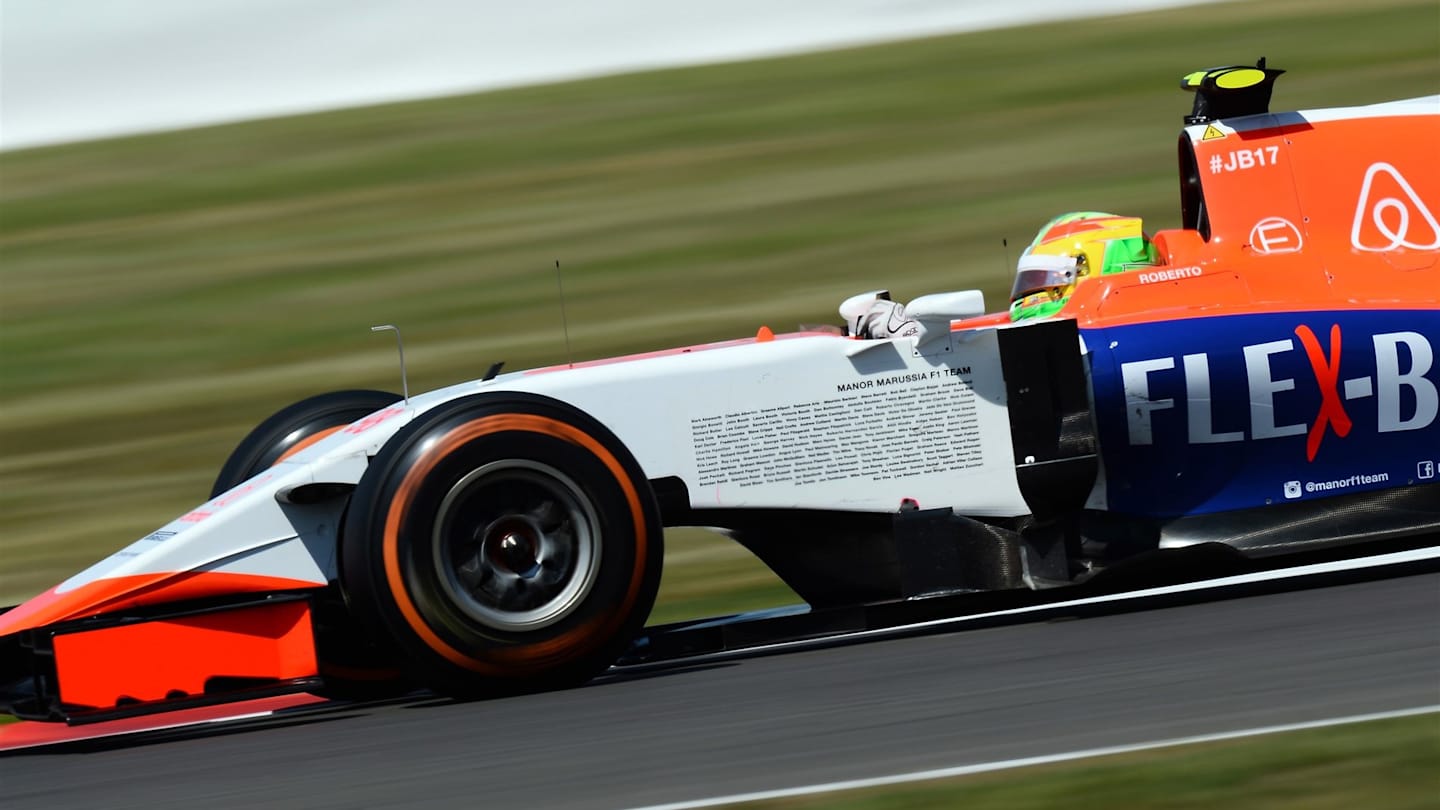
Roberto Merhi (ESP) Manor GP at Formula One World Championship, Rd9, British Grand Prix, Practice, Silverstone, England, Friday 3 July 2015.
Every single race we’ve closed the gap to the front - and considering how hard they are pushing at the front it’s amazing!
John Booth
Q: What is the situation with your drivers? Are you planning to retain the same two for the rest of the season? When Roberto Merhi joined you said that his deal was for the first few races of the season only - but he’s still here…
JB: And doing a great job too - he’s getting the hang of it now. Graeme talked about the difficulty of building the team, I mean we threw two rookies in with no pre-season testing and missing the first race altogether, and just to expect them to perform - which they have done - they’ve done an outstanding job. I think we’re over the moon with both drivers. Up until now we’ve given them a car that’s not been easy to drive and the engine must be at least 1-1.5 seconds slower than the best engine on the grid. We haven’t made their lives easy.
Q: Obviously Will and Roberto are each other’s main competitors. How would you describe their rivalry?
JB: They started getting very competitive a few races ago, but they seem to have had conversations themselves about how they want to conduct themselves on track. They’re both very intelligent guys, and they know each other very well of course. I think they’re developing into a strong team now.
Q: It would seem to make sense to keep them together for development purposes, but you also have Fabio Leimer waiting in the wings…
JB: Another excellent driver with a great pedigree. We’ll do something with Fabio before the season is over for sure.
Q: Speaking more generally about drivers, do you envisage a future where you won’t need drivers to bring funding?
GL: That’s definitely more of a bigger picture F1 thing, because I can’t see a team in the pit lane that doesn’t link drivers to money in some way or another.
JB: There are always commercial considerations with a driver, no matter who they are or where they are on the grid.
Q: The F1 Strategy Group announced several proposed rule changes recently, some for this season and some for 2016 and beyond. As a general question, do you think the teams should have an input on the F1 rules, as some - though not Marussia - do now, or should it be the responsibility of the governing body?
GL: In the past a lot of teams were tiny, like microbusinesses, and now a typical F1 team is a large entity, a large employer. We have responsibilities to employees, a corporate-social responsibility and a big supply chain. So things have changed, and I think a balanced governance system would take into account the thoughts and considerations of the participants because we are such big entities now. To completely ignore the participants wouldn’t seem to make a lot of sense, but equally teams have very divergent goals and objectives, so I think as a lot of people have commented, it’s difficult for the teams to try to set the rules and they shouldn’t have to. But whoever is doing that task should at least have the ability to confer and discuss things in a suitable forum with the teams.
Q: Regardless of your input - or lack thereof - in what’s going on at the moment, as racing men do you like some of the proposals being put forward at the moment for 2017: wider cars, wider tyres and so on…
JB: The 2017 proposals are quite interesting. That would be a chance to do something dramatic with the sport. The other things are quite hard to comment on really because we don’t know the details of them.
GL: I think what the fans want to see is close racing and a degree of unpredictability. But equally I’m fairly sure what they want to see is skill being rewarded. I don’t subscribe to this idea that if the rules all changed then the skilful, successful teams won’t be winning. There are some fabulous teams up and down the pit lane with incredible ability and I don’t think they should be too worried about their ability to compete. The important thing is to always consider not just the sporting side, but the technical side and also the financial side. Some decisions can be made but they may not necessarily fit with the bigger financial picture about where is the best place for the sport to be. As we’ve said all along, this is not an easy task for the people who are trying to create the rules and environment - it’s not a straightforward job.
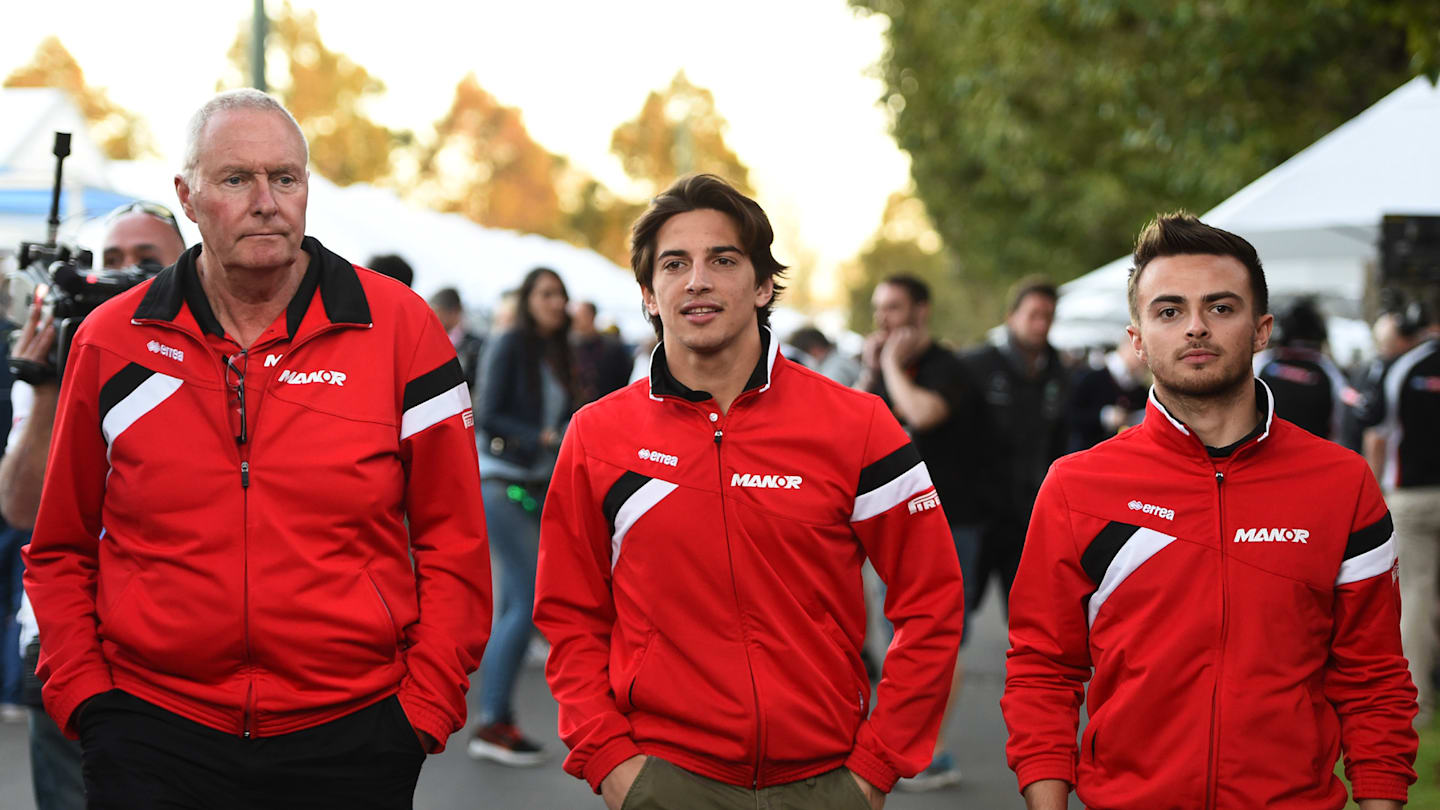
John Booth (GBR) Manor GP Team Principal, Roberto Merhi (ESP) Manor GP and Will Stevens (GBR) Manor GP at Formula One World Championship, Rd1, Australian Grand Prix, Practice, Albert Park, Melbourne, Australia, Friday 13 March 2015. BEST IMAGE
A big hole would be left if we weren’t building and developing our own cars. A big hole.
John Booth
Q: Marussia, along with all your rivals on the grid, are not just teams but also constructors. Is that always going to be important to you? Would the idea of going racing and not building your own cars ever appeal?
GL: At the moment we fight for two championships - a drivers’ championship and a constructors’ championship. In the same way you wouldn’t want to see us doing radio-controlled cars with no driver, I think our expertise as a company is on manufacturing, designing and building racing cars. I think that is very much where the sport has moved to and found a real niche. People say it’s the pinnacle of world motorsport and I think one of the reasons for that is because you’ve got ten very specialist manufacturing companies solving problems against a very prescribed formula. And so for me that’s inherent to the sport.
JB: Our team was back up to numbers of 220 within a number of months, and 70 percent of those people are employed to build and develop our car. So if you remove that necessity we’ll lose more than half of what we’re all about. Most of what we do on track is then fine tuning that product. A big hole would be left if we weren’t building and developing our own cars. A big hole.
GL: You have to ask what would be the reason for making that change [away from teams building their own cars]? If you’re not a manufacturer I can see why you would want it, but if you are I really can’t. There are lots of ways the industry could move forward, and I don’t see making that change [towards customer cars] as being the crucial factor to allowing the industry to grow.
Q: You made it back onto the grid this season, but it was all fairly last minute. Does that make this season one of consolidation?
JB: We’re not building from zero again, but we’re pretty low down there. We lost a lot of our infrastructure over the winter, particularly factory-based infrastructure - we have to build another factory for instance. So we’re not starting from zero, but we’re starting from a long way down. So consolidation is probably exactly the right word.
GL: It’s important to see that we fought really, really hard to make sure the team stays in this championship. As I said, we have a lot of respect for the championship and it’s a championship we want to be in. At a time when you read all these stories about people threatening to leave the championship, I think it’s nice to see a story where people are really putting in huge effort because they see the benefit of being in the championship. It’s not easy - it’s a super hard business - but it’s hard because you’re directly competing with really top class organisations. That’s where we wanted to be and we knew we wouldn’t be able to continue the trajectory of development considering we’ve had to consolidate and do a lot of rebuilding. But it’s funny how normal everything feels at every race that we go to, and we’re starting to see updates on the car and the wind tunnel programme is back on track.
Q: You’re obviously not here just to make up the numbers, but at the same time you’re probably never going to have the budget of a Mercedes or Red Bull. So how do you make progress?
GL: The sport has changed immeasurably over 60 years, and over that time the influence of finances has been greater or lesser depending upon where things are at. The landscape changes, but if you’re not here and not in the championship, it doesn’t matter how much money you have or how little you’ve got, you’re not going to be in any position to take advantage and compete. So it’s difficult for us at the moment, but you see other teams are having difficulties because of other factors. We firmly believe we can build a successful and sustainable team in F1.
Q: So is it just a case of keep doing what you’re doing?
GL: We’re still closing the gap to the cars in front and, as John alluded to, you could argue we shouldn’t be anywhere near where we are at the moment. We’re typically running last in terms of lap time at the moment - we recognise that - but considering the hurdles we’ve had to overcome and the compromises we’ve had to accept, then the gap’s actually not as big as you’d expect. Nobody’s slowing down to let us catch up!
JB: If you look back to Australia 2014, that was the first car that we built with a proper development programme, a fully functioning factory, a fully functioning design team, and we rolled out in Australia in a brand-new formula and a new set of regulations with a car on the weight limit that was more competitive than a Sauber or Caterham - who had greater budgets - and pretty much a match for Lotus. That ebbed away after five or six races because we didn’t have the money to bring anything new to the car. So if you look at the car we produced for the start of the 2014 season it wasn’t quite midfield, but for the first time we showed steps to getting there. So I think that’s our first target - to get back to that position: a fully functioning factory, a fully functioning race team, producing a product like that. Then we can build from there.
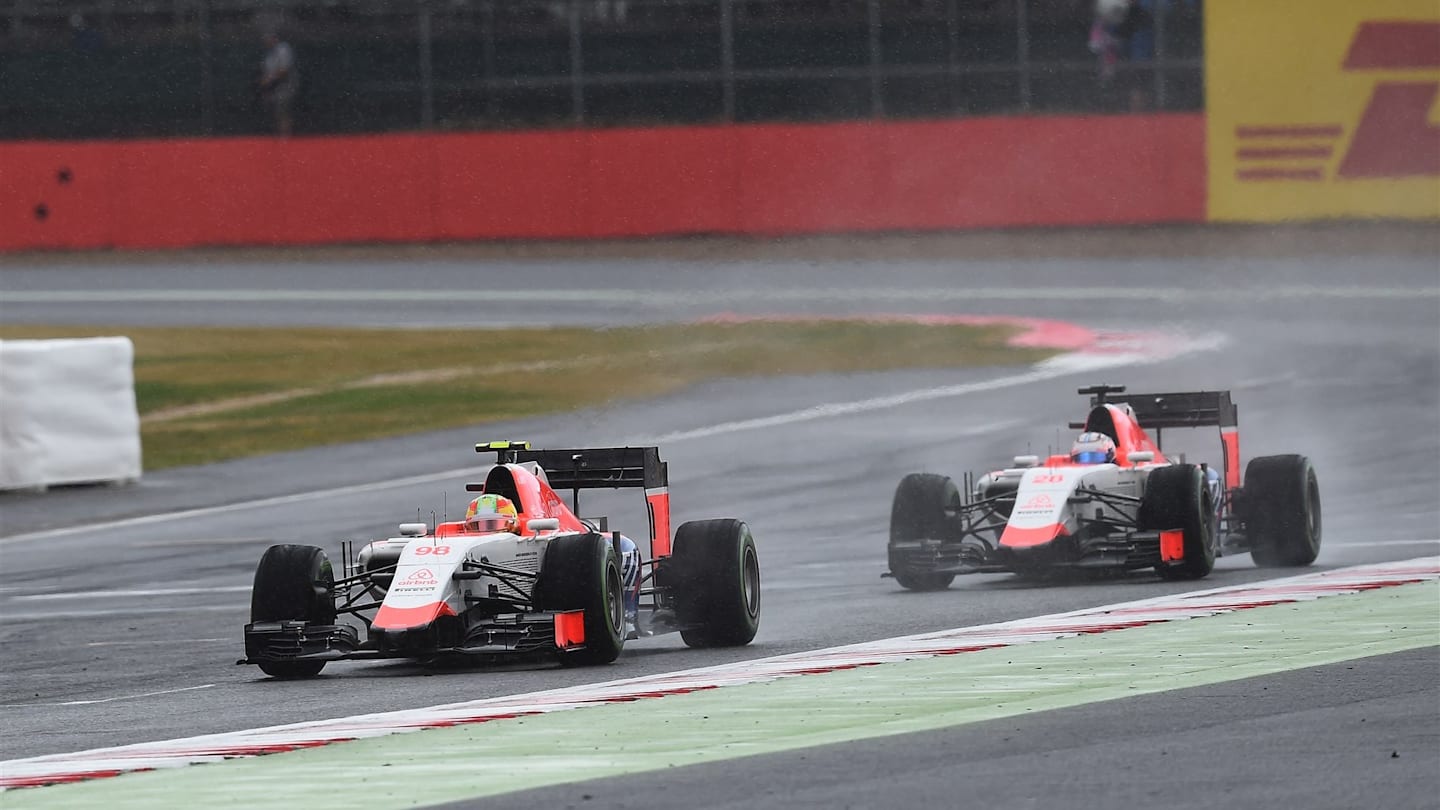
Will Stevens (GBR) Manor GP and Roberto Merhi (ESP) Manor GP battle for position at Formula One World Championship, Rd9, British Grand Prix, Race, Silverstone, England, Sunday 5 July 2015.
To produce the updates we did for Silverstone with our resources was incredible.
John Booth
Q: Did it make a big difference inside the race team, being more competitive?
JB: It was massive. I remember we went to the test at Barcelona last year and only a couple of teams used the supersoft tyres, but even so we were P1 with Max (Chilton) on day one. Then we went onto Monaco after that and produced a result. So that produced a buzz like you can’t imagine, but of course we weren’t in a position to build from there. So it was a disappointment in the end.
Q: So was it a disappointment to see your rival teams testing in Austria after the Grand Prix when you weren’t?
JB: No. To produce the updates we did for Silverstone with our resources was incredible. If we could have had those parts ready for Austria then great - but we knew we couldn’t. So there was no point testing at Austria without the new parts.
Q: Are there any further upgrades coming?
JB: We’ve got quite a big step planned for Singapore. Then some other bits and bobs around the car around the same time.
Q: So in terms of the rest of the season, what are the aims and objectives?
GL: It’s so difficult trying to articulate targets this year. You would never go about trying to plan a season like we have this season, so equally the aims and objectives are never ones you’d plan either. Every race weekend we look to see what would have been the best result we could achieve with the current package we’ve got. In other words, we’ve got to make sure that whenever we get speed into the car or a new car or whatever, we’re there ready to take advantage of it. How are we doing on pit stops? How are we doing on race strategy? We’ve got to make sure that the team is really on it. If you look at this year we’re improving every race in terms of race team performance, but you can’t necessarily see it on the result sheet or the time sheet. So a lot of our objectives mean something to us but not necessarily to the outside world.
JB: I think our off-track objectives are a bit easier to quantify. The major one was getting back in the wind tunnel, which we’ve now achieved. The next one will be moving into our new factory. That should be sometime in September. At the moment we’re operating from three different homes which is not ideal. When we get settled in there and we’re all back under one roof it will be a big step forward for us.
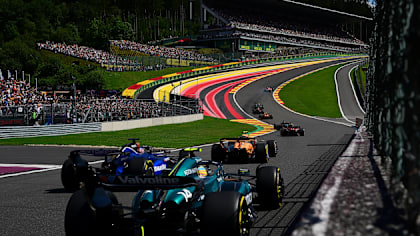


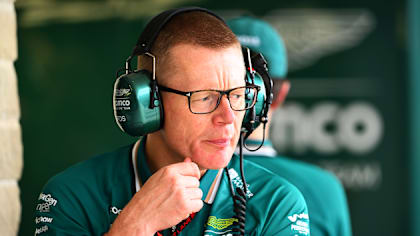
.png)